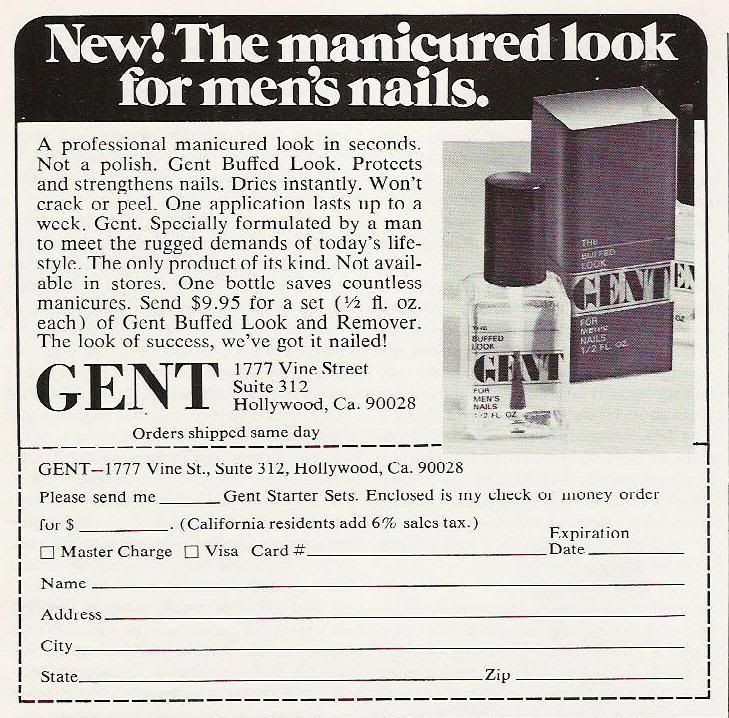
from Christopher Street.
April 1980, page 20.
For details, click the image; then click again to magnify.
Meet the rugged demands of today's lifestyle...with nail polish.

Ponders the myriad pathologies of pop culture.
Obsesses about actressing at the edges.
Loves grilled cheese.
ARCHIVE OF SUPPORTING ACTRESS SUNDAYS & THE SMACKDOWN

 WOW. It seems that Supporting Actress Sundays will start its second year with a bang with nearly 200 votes to determine the year under scrutiny for April. But 'twas the 75 or clicks behind 1985 that made this year's voting such a rout. Just think: a year ago, when Supporting Actress Sundays started, only eight folks weighed in to decide upon 1958. What a difference a year makes. Thanks for your devotion, lovely reader. StinkyLulu's really looking forward to the next 9 months of actressing at the edges, with y'all in tow o'course. Voting for May's roster will commence in couple weeks (voting typically start on the second Monday of the month). But, for now, whet your whistles for this coming Sunday and the start of April's Month of Supporting Actress Sundays:
WOW. It seems that Supporting Actress Sundays will start its second year with a bang with nearly 200 votes to determine the year under scrutiny for April. But 'twas the 75 or clicks behind 1985 that made this year's voting such a rout. Just think: a year ago, when Supporting Actress Sundays started, only eight folks weighed in to decide upon 1958. What a difference a year makes. Thanks for your devotion, lovely reader. StinkyLulu's really looking forward to the next 9 months of actressing at the edges, with y'all in tow o'course. Voting for May's roster will commence in couple weeks (voting typically start on the second Monday of the month). But, for now, whet your whistles for this coming Sunday and the start of April's Month of Supporting Actress Sundays: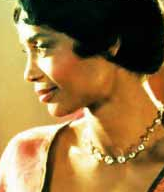


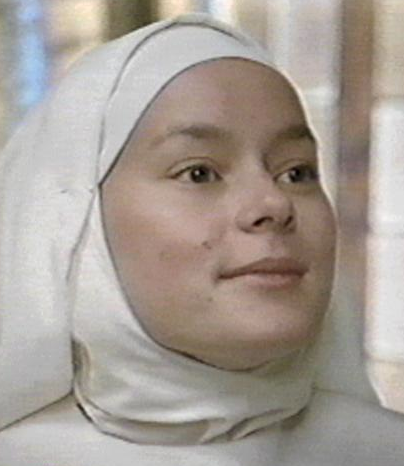


 Apologies are in order, lovely reader. I had totally planned to hit an overlooked 1994 performance this morning, but the time just slipped away this week. It may still happen, but -- in the meantime -- 'twas necessary to meet a prior commitment and submit a post for the amazing Goatdog & his 1927 Blogathon. So, for this Supporting Actress Sunday, StinkyLulu offers for your 1927 consideration...
Apologies are in order, lovely reader. I had totally planned to hit an overlooked 1994 performance this morning, but the time just slipped away this week. It may still happen, but -- in the meantime -- 'twas necessary to meet a prior commitment and submit a post for the amazing Goatdog & his 1927 Blogathon. So, for this Supporting Actress Sunday, StinkyLulu offers for your 1927 consideration...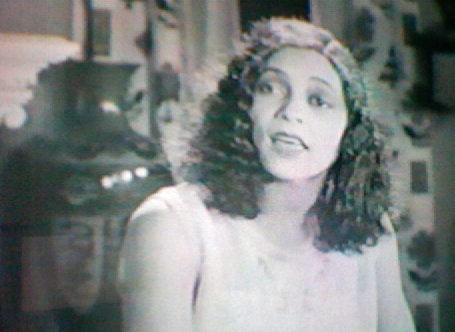

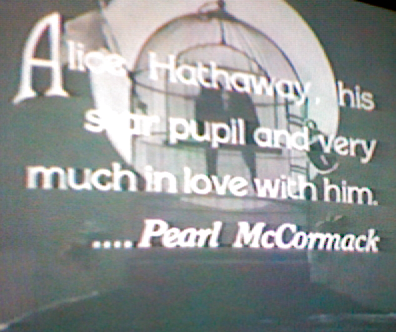
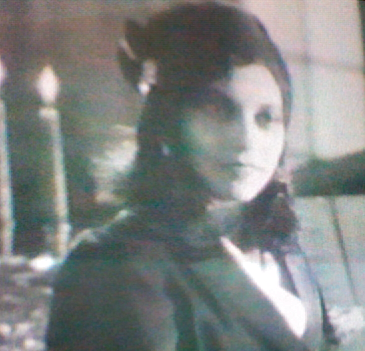
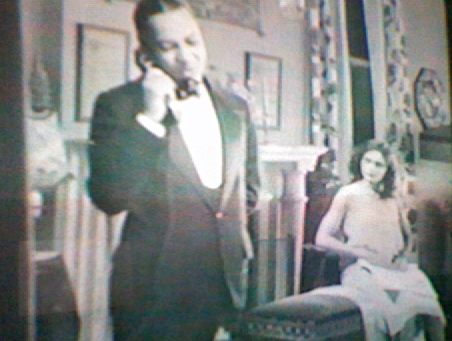

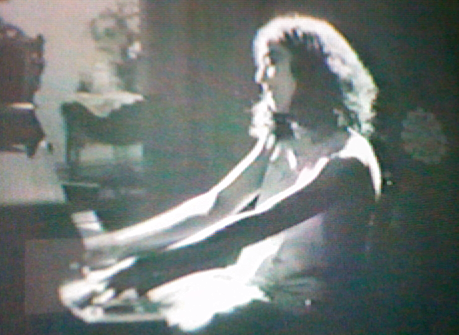 McCormack animates her scenes with a ready impetuousness, infusing her character's purity with an energetic womanliness that sparks the film to life in its final act. McCormack's Alice has little to do. She is, after all, mostly there as moral counterpoint to Moses's Louise. While Moses gets to gamble, drink, flirt and dance, Alice radiates goodness playing classical piano at home.
McCormack animates her scenes with a ready impetuousness, infusing her character's purity with an energetic womanliness that sparks the film to life in its final act. McCormack's Alice has little to do. She is, after all, mostly there as moral counterpoint to Moses's Louise. While Moses gets to gamble, drink, flirt and dance, Alice radiates goodness playing classical piano at home.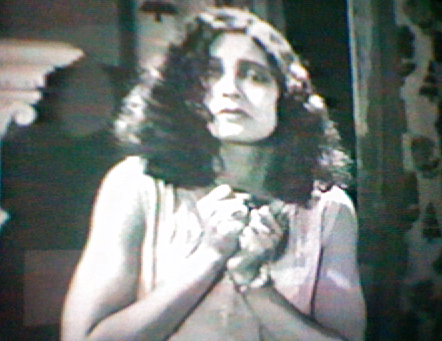
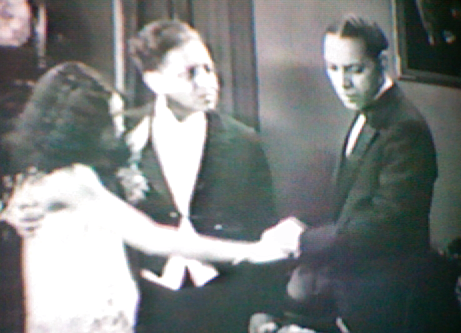 And even then, as the concluding action wheezes through its perfunctory woman-sacrificing plot machinations, McCormack's Alice gives the scenes their only verve. In The Scar of Shame, Pearl McCormack's animated performance emerges as one of the treats in this halting B-movie melodrama. (The other treats are in the excellent club scenes, where unnamed and mostly dark-skinned characters get all vice-y -- good stuff.)
And even then, as the concluding action wheezes through its perfunctory woman-sacrificing plot machinations, McCormack's Alice gives the scenes their only verve. In The Scar of Shame, Pearl McCormack's animated performance emerges as one of the treats in this halting B-movie melodrama. (The other treats are in the excellent club scenes, where unnamed and mostly dark-skinned characters get all vice-y -- good stuff.) When voting opened to determine the roster for April's Supporting Actress Sundays, StinkyLulu thought sure 1976 would gather the most votes, with 1994 being a formidable contender. (Lu certainly did not anticipate that 1985 would rout the competition -- though you, lovely reader can still cast your vote for April's Supporting Actress Sundays in the voting panel at top right.) But even more surprising? How 1940 -- one of the most solidly deserving fields of nominees in the category's history -- would be left behind so ignominiously. Indeed, when tossing about for "overlooked" 1940 performance & consulting with the resident "overlooked" expert Canadian Ken, it came even clearer: The Academy nominated correctly in 1940. (How often can you say that?) Even so, the presence of Oscar's very first Best Supporting Actress in a couple 1940s projects was intriguing, especially...
When voting opened to determine the roster for April's Supporting Actress Sundays, StinkyLulu thought sure 1976 would gather the most votes, with 1994 being a formidable contender. (Lu certainly did not anticipate that 1985 would rout the competition -- though you, lovely reader can still cast your vote for April's Supporting Actress Sundays in the voting panel at top right.) But even more surprising? How 1940 -- one of the most solidly deserving fields of nominees in the category's history -- would be left behind so ignominiously. Indeed, when tossing about for "overlooked" 1940 performance & consulting with the resident "overlooked" expert Canadian Ken, it came even clearer: The Academy nominated correctly in 1940. (How often can you say that?) Even so, the presence of Oscar's very first Best Supporting Actress in a couple 1940s projects was intriguing, especially...


 Each woman knows more about the other than either would ever say, even without the public humiliation of a translator. And one of Davis's best moments in the film relies upon this wordless eye contact: it's just after Leslie's been declared innocent and is being ushered from the courtroom. Davis's radiant smile freezes to a grim mask as Wyler's camera slides to a view of Sondergaard's Mrs. Hammond, who regards her vindicated rival with mysterious intensity. It's a great moment.
Each woman knows more about the other than either would ever say, even without the public humiliation of a translator. And one of Davis's best moments in the film relies upon this wordless eye contact: it's just after Leslie's been declared innocent and is being ushered from the courtroom. Davis's radiant smile freezes to a grim mask as Wyler's camera slides to a view of Sondergaard's Mrs. Hammond, who regards her vindicated rival with mysterious intensity. It's a great moment.

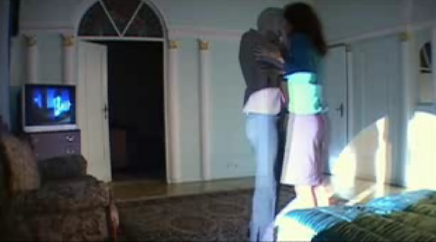 It's been 20 years since my first experience of the deep palpable physical misery of a 1st screening of a David Lynch film. A Lynch film is the cinematic definition of "discomfit." Then, of course, the obsession kicks in & I only want to watch it all over again. Somehow believing I might be able to unpuzzle it with a second look. Ha. Got me again... The f*cker.
It's been 20 years since my first experience of the deep palpable physical misery of a 1st screening of a David Lynch film. A Lynch film is the cinematic definition of "discomfit." Then, of course, the obsession kicks in & I only want to watch it all over again. Somehow believing I might be able to unpuzzle it with a second look. Ha. Got me again... The f*cker.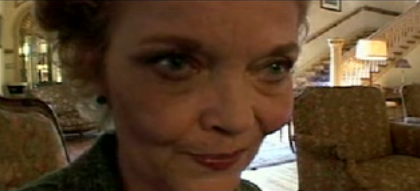 Few contemporary American directors love filming actors more than Lynch. You can see it in the way he frames their faces. It's a worshipful cruelty. And it captures the shocking and surprising contours of an actor's performance in ways almost unique to Lynch. Think of that big sidewalk scene and how Lynch's fascination with each actor's face amplifies gory absurdity into something startling...poetry. The f*cker.
Few contemporary American directors love filming actors more than Lynch. You can see it in the way he frames their faces. It's a worshipful cruelty. And it captures the shocking and surprising contours of an actor's performance in ways almost unique to Lynch. Think of that big sidewalk scene and how Lynch's fascination with each actor's face amplifies gory absurdity into something startling...poetry. The f*cker.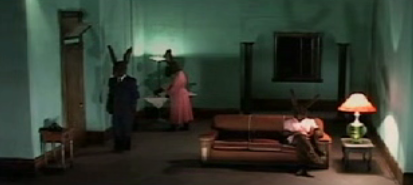 Perhaps the most elliptical visual Lu's seen in a good while. For Lulu, the big bunnies were the source of some of the greatest tension in the film. At first I got to thinkin' the big bunny scenes cued some big concept about life & voyeurism & theatricality & rodents...but then I got confused. And toward the end I was just dying -- actually bouncing up and down in my seat -- in anticipation of Laura Dern crashing through that stage right door and then wandering among those big bunny people. (Gawd wouldn't that have been kewl?!?) Not that it would have said anything in particular about what was going on with those f'n bunnies. (What was going on with those bunnies?) And not that it actually happend. Lynch. The f*cker.
Perhaps the most elliptical visual Lu's seen in a good while. For Lulu, the big bunnies were the source of some of the greatest tension in the film. At first I got to thinkin' the big bunny scenes cued some big concept about life & voyeurism & theatricality & rodents...but then I got confused. And toward the end I was just dying -- actually bouncing up and down in my seat -- in anticipation of Laura Dern crashing through that stage right door and then wandering among those big bunny people. (Gawd wouldn't that have been kewl?!?) Not that it would have said anything in particular about what was going on with those f'n bunnies. (What was going on with those bunnies?) And not that it actually happend. Lynch. The f*cker. Lynch casts smarter than almost anyone. Tosses seasoned pros in with novices. And he then adds non-actors for spice/spite. And, here, he gets all international on the cast too. And then he puts big stars in voiceover or in background during the marvelous closing credits. (Behind, of all things, a rollicking lipsych number performed by -- truly, if I read the credits correctly -- students from The Debbie Allen Dance Academy.) Who else would do this? The f*cker.
Lynch casts smarter than almost anyone. Tosses seasoned pros in with novices. And he then adds non-actors for spice/spite. And, here, he gets all international on the cast too. And then he puts big stars in voiceover or in background during the marvelous closing credits. (Behind, of all things, a rollicking lipsych number performed by -- truly, if I read the credits correctly -- students from The Debbie Allen Dance Academy.) Who else would do this? The f*cker. Nathaniel at The Film Experience (one of StinkyLulu's favorite blogfriends & regular Smackdowner) is currently running a major fundraiser to support his pursuit of generalized film obsession. And while StinkyLulu doesn't have a lotta extra cash, StinkyLulu does have LOTS of extra crap. SO: beginning today, StinkyLulu's begun listing some nifty junk over on eBay as part of a "Share The Love" campaign to benefit The Film Experience. Click on over and you'll find auctions for books, dvds, pop culture ephemera, porn...the proceeds from which will be donated to The Film Experience fundraiser. The bidding starts low. The shipping costs are basic. And it's for a good cause...
Nathaniel at The Film Experience (one of StinkyLulu's favorite blogfriends & regular Smackdowner) is currently running a major fundraiser to support his pursuit of generalized film obsession. And while StinkyLulu doesn't have a lotta extra cash, StinkyLulu does have LOTS of extra crap. SO: beginning today, StinkyLulu's begun listing some nifty junk over on eBay as part of a "Share The Love" campaign to benefit The Film Experience. Click on over and you'll find auctions for books, dvds, pop culture ephemera, porn...the proceeds from which will be donated to The Film Experience fundraiser. The bidding starts low. The shipping costs are basic. And it's for a good cause... "had been diagnosed with inoperable tumors in November... We were so happy to have her with us these last three months. During this time, she did all of her favorite activities: chasing squirrels (slower than usual), playing tag with me (again slower than usual), exploring the forest, rolling in gloriously stinky stuff (glorious to her, not to us!), eating egg and hamburger, napping, and snuggling. She died very peacefully while being stroked and comforted..."
"had been diagnosed with inoperable tumors in November... We were so happy to have her with us these last three months. During this time, she did all of her favorite activities: chasing squirrels (slower than usual), playing tag with me (again slower than usual), exploring the forest, rolling in gloriously stinky stuff (glorious to her, not to us!), eating egg and hamburger, napping, and snuggling. She died very peacefully while being stroked and comforted..." So in honor of Ivy, lovely reader, take a moment to share some love with your favorite critters. Nuzzle that big dog of yours. Pet that adorable pussy. Feed the fish already. Then click the logo at right, and click again on the big purple button to contribute just a smidge to animal rescue efforts....
So in honor of Ivy, lovely reader, take a moment to share some love with your favorite critters. Nuzzle that big dog of yours. Pet that adorable pussy. Feed the fish already. Then click the logo at right, and click again on the big purple button to contribute just a smidge to animal rescue efforts.... Since each Sunday in March is devoted to profiling the "overlooked" actressing at the edges from each of the years under consideration for April -- (vote for April's Supporting Actress Sundays toward the top of the right column) -- the candidacy of 1967 brings StinkyLulu to this week's installment: a torrid, perverse cinematic sampling of Southern Gothic which (somewhat amazingly given StinkyLu's Tennessee Williams fetish) Lulu had never even heard of until sitting on a panel at an academented fandango last fall. StinkyLulu's co-panelist was theorizing about "the Asian bottom" and riffing on the extraordinary Anacleto, perhaps the sissiest Filipino houseboy character in all of U.S. cinema, and who dotes upon Miss Alison, the damaged southern belle (garden shears!) played by...
Since each Sunday in March is devoted to profiling the "overlooked" actressing at the edges from each of the years under consideration for April -- (vote for April's Supporting Actress Sundays toward the top of the right column) -- the candidacy of 1967 brings StinkyLulu to this week's installment: a torrid, perverse cinematic sampling of Southern Gothic which (somewhat amazingly given StinkyLu's Tennessee Williams fetish) Lulu had never even heard of until sitting on a panel at an academented fandango last fall. StinkyLulu's co-panelist was theorizing about "the Asian bottom" and riffing on the extraordinary Anacleto, perhaps the sissiest Filipino houseboy character in all of U.S. cinema, and who dotes upon Miss Alison, the damaged southern belle (garden shears!) played by...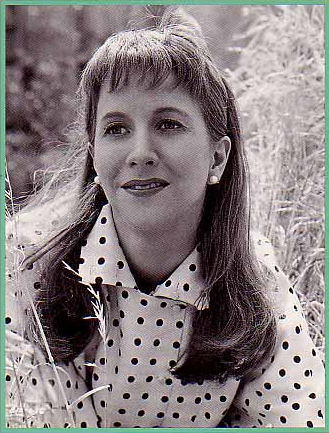

 as a closeted military man, is a fascinating document of sexuality in U.S. commercial film. Basically, they couldn't have made this film a year or two earlier, and they wouldn't have needed to a year or two later. Add to that Huston's wild color stylization (desaturating the color to highlight only yellow, white and black tones, creating a somewhat legendary "golden" film that the studio only allowed screened for a week before re-releasing prints using conventional color process & which has been restored in the recent dvd release)? Well. Reflections in a Golden Eye shows studio big names/budgets colliding with the social and aesthetic upheavals of the 1960s in possibly unique ways. Garish. Gaudy. Gory. Soooo much a document of its historical moment.
as a closeted military man, is a fascinating document of sexuality in U.S. commercial film. Basically, they couldn't have made this film a year or two earlier, and they wouldn't have needed to a year or two later. Add to that Huston's wild color stylization (desaturating the color to highlight only yellow, white and black tones, creating a somewhat legendary "golden" film that the studio only allowed screened for a week before re-releasing prints using conventional color process & which has been restored in the recent dvd release)? Well. Reflections in a Golden Eye shows studio big names/budgets colliding with the social and aesthetic upheavals of the 1960s in possibly unique ways. Garish. Gaudy. Gory. Soooo much a document of its historical moment. (You really have to hear Taylor's reading of that line to believe it.) So, as you might imagine, Alison's not really in the mood. Plus, she's got a swell girlfriend in her houseboy Anacleto, with whom she paints and gossips and stays up all night. As for Brando's Penderton, on the other hand, he's priggish, imperious, insufferable but mostly he won't put any to Taylor's Leonora because, in the language of the day, he's a "latent" homosexual.
(You really have to hear Taylor's reading of that line to believe it.) So, as you might imagine, Alison's not really in the mood. Plus, she's got a swell girlfriend in her houseboy Anacleto, with whom she paints and gossips and stays up all night. As for Brando's Penderton, on the other hand, he's priggish, imperious, insufferable but mostly he won't put any to Taylor's Leonora because, in the language of the day, he's a "latent" homosexual.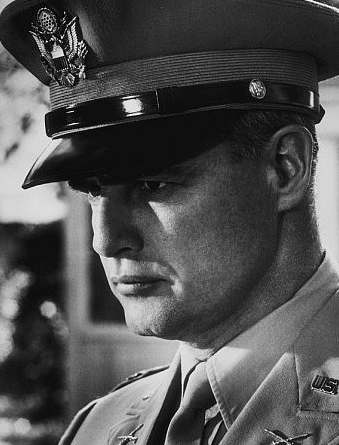 Brando gives an intense, if constipated, performance as Penderton. Vocally, he's all stunted and stifled. (Between Brando's Penderton and Ledger's Ennis Del Mar it might seem that such mumbling and word swallowing is symptomatic of repressed homosexuality). Behaviorally, Brando piles on the mannered idiosyncrasy in extra little scenelets, some poignant (caressing the incriminating treasures stashed in his strong box), some startling (slathering his wife's cold cream all over his face with manic glee).
Brando gives an intense, if constipated, performance as Penderton. Vocally, he's all stunted and stifled. (Between Brando's Penderton and Ledger's Ennis Del Mar it might seem that such mumbling and word swallowing is symptomatic of repressed homosexuality). Behaviorally, Brando piles on the mannered idiosyncrasy in extra little scenelets, some poignant (caressing the incriminating treasures stashed in his strong box), some startling (slathering his wife's cold cream all over his face with manic glee). 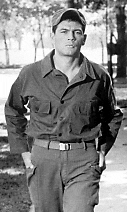 And, truly, it's hard not to see Brando's Penderton as Sayonara's Major Gruver all growed up. But, here, the object of Brando's forbidden desire is the astonishingly hot Robert Forster, in his bareassed film debut, as Private Williams. Forster's Williams flirts with Brando's infatuation just as brazenly as Hana-Ogi but stops just short of...well. Huston's smart to photograph Forster in ways that amplify his beauty while allowing him to remain unqualifiedly masculine, affirming that he's as odd a duck as the rest of them while not "queering" him too much. It's all uapologetically macho and homo at the same time...which remains surprising, frankly, in a mainstream film.
And, truly, it's hard not to see Brando's Penderton as Sayonara's Major Gruver all growed up. But, here, the object of Brando's forbidden desire is the astonishingly hot Robert Forster, in his bareassed film debut, as Private Williams. Forster's Williams flirts with Brando's infatuation just as brazenly as Hana-Ogi but stops just short of...well. Huston's smart to photograph Forster in ways that amplify his beauty while allowing him to remain unqualifiedly masculine, affirming that he's as odd a duck as the rest of them while not "queering" him too much. It's all uapologetically macho and homo at the same time...which remains surprising, frankly, in a mainstream film. With Alison, Harris reinvents the stock character of the neurotic Southern damsel by honing in on Alison's myriad humiliations and tapping the anger there. Alison isn't crazy because she's delicate. No, Harris's Alison is mad -- in both senses of the term -- because of the gendered cruelties of the world in which she lives. In Harris's performance, Alison emerges not only as perhaps the first full-fledged "fag hag" in US cinema but also as a kind of pre-feminist cautionary tale, embodying a particularly Southern variation of the Feminine Mystique.
With Alison, Harris reinvents the stock character of the neurotic Southern damsel by honing in on Alison's myriad humiliations and tapping the anger there. Alison isn't crazy because she's delicate. No, Harris's Alison is mad -- in both senses of the term -- because of the gendered cruelties of the world in which she lives. In Harris's performance, Alison emerges not only as perhaps the first full-fledged "fag hag" in US cinema but also as a kind of pre-feminist cautionary tale, embodying a particularly Southern variation of the Feminine Mystique. Harris's performance reaches deep into Alison to retrieve a fully realized, human characterization out of one of the most cliched Southern Gothic stock figures. Harris's Alison is a remarkable accomplishment, a flash of clarity and humanity in the curiously stewed Reflections in a Golden Eye.
Harris's performance reaches deep into Alison to retrieve a fully realized, human characterization out of one of the most cliched Southern Gothic stock figures. Harris's Alison is a remarkable accomplishment, a flash of clarity and humanity in the curiously stewed Reflections in a Golden Eye.